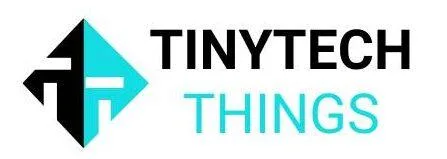In the digital age, search engine optimization (SEO) plays a crucial role in driving organic traffic to websites. While there are various aspects of SEO, content creation stands at the forefront. Crafting SEO-friendly content is a skill that requires an understanding of both search engine algorithms and user preferences. This article will delve into strategies and provide examples to help you create compelling, optimized content that ranks well and engages your target audience.
Table of Contents
Keyword Research: The Foundation of SEO
Thorough keyword research is necessary before beginning the content development process. Identifying relevant keywords and phrases that align with your target audience’s search intent allows you to optimize your content effectively. Tools like Google Keyword Planner, SEMrush, and Moz’s Keyword Explorer can assist in finding high-ranking and low-competition keywords.
Example:
Suppose you run a fitness blog targeting beginners. After conducting keyword research, you discover that “how to start a workout routine for beginners” has a high search volume and moderate competition. This keyword becomes the focus of your content creation.
Structuring SEO-Friendly Content
Title Tag Optimization
The title tag is one of the most critical elements for SEO. It should be concise, relevant, and enticing, incorporating the primary keyword for better visibility. Keeping it under 60 characters ensures that it is fully displayed in search engine results.
Example: “Kickstart Your Fitness Journey: How to Start a Workout Routine for Beginners”
Meta Description Optimization
The meta description is the snippet that appears below the title tag in search results. It should provide a concise summary of the content while encouraging users to click through. Incorporating the primary keyword and keeping it within 150-160 characters is ideal.
Example: “Looking to start a workout routine as a beginner? Discover essential tips and step-by-step guidance to kickstart your fitness journey with expert advice and motivational strategies.”
Headers and Subleader's
Breaking your content into sections using headers (H1, H2, H3, etc.) enhances readability and allows search engines to understand the structure of your content better. Incorporate relevant keywords naturally within these headers to provide context and improve SEO.
Example:
H1: How to Start a Workout Routine for Beginners
H2: Setting Realistic Fitness Goals
H2: Designing Your Exercise Plan
H2: Staying Motivated Throughout Your Fitness Journey
Keyword Placement
Strategically placing your primary keyword throughout your content signals to search engines what your article is about. However, it’s crucial to avoid overstuffing keywords, as it can result in a poor user experience and potential penalties from search engines.
Example:
Introduction: “Embarking on a fitness journey can be intimidating, especially for beginners looking to start a workout routine.”
In summary, by adhering to these recommendations, you will be adequately prepared to commence a workout routine for beginners and successfully accomplish your fitness aspirations.
“By following these tips, you’ll be well-equipped to start a workout routine for beginners and achieve your fitness goals.”
Creating Engaging and SEO-Optimized Content
High-Quality and Original Content
Producing unique, valuable, and well-researched content is crucial for both users and search engines. Aim to answer users’ queries comprehensively while showcasing your expertise. Long-form content often performs well, but ensure it remains engaging and easy to digest.
Example: Instead of merely explaining the benefits of different exercises, provide detailed instructions, tips for proper form, and variations to cater to different fitness levels.
Incorporating Multimedia Elements
Enhancing your content with relevant images, videos, infographics, and other multimedia elements improves user experience, increases time spent on page, and encourages social sharing. Optimize these elements with alt tags and descriptive filenames to make them discoverable in image searches.
Example: Include a video tutorial demonstrating essential exercises for beginners or infographics showcasing a sample workout routine.
Internal and External Linking
Strategic internal linking to relevant pages within your website helps search engines understand your content’s hierarchy and establishes connections between related topics. External linking to reputable sources provides credibility and fosters a collaborative online environment.
Example: Link to articles on nutrition, proper form, and recovery tips within your content. Additionally, reference authoritative studies or industry-leading publications to support your claims.
Crafting SEO-friendly content involves a combination of keyword research, proper structuring, and engaging writing. By implementing the strategies outlined above and adapting them to your specific niche, you can create content that not only ranks well in search engine results but also resonates with and provides value to your target audience. Remember, SEO is an ongoing process, and staying updated with the latest trends and algorithm changes will help you maintain and improve your content’s visibility over time.






One thought on “The Art of Crafting SEO-Friendly Content: Strategies and Examples for Maximum Visibility”
Pingback: ChatGPT and On-Page SEO: The Perfect Duo for Optimized Content Creation - Tinytech Things